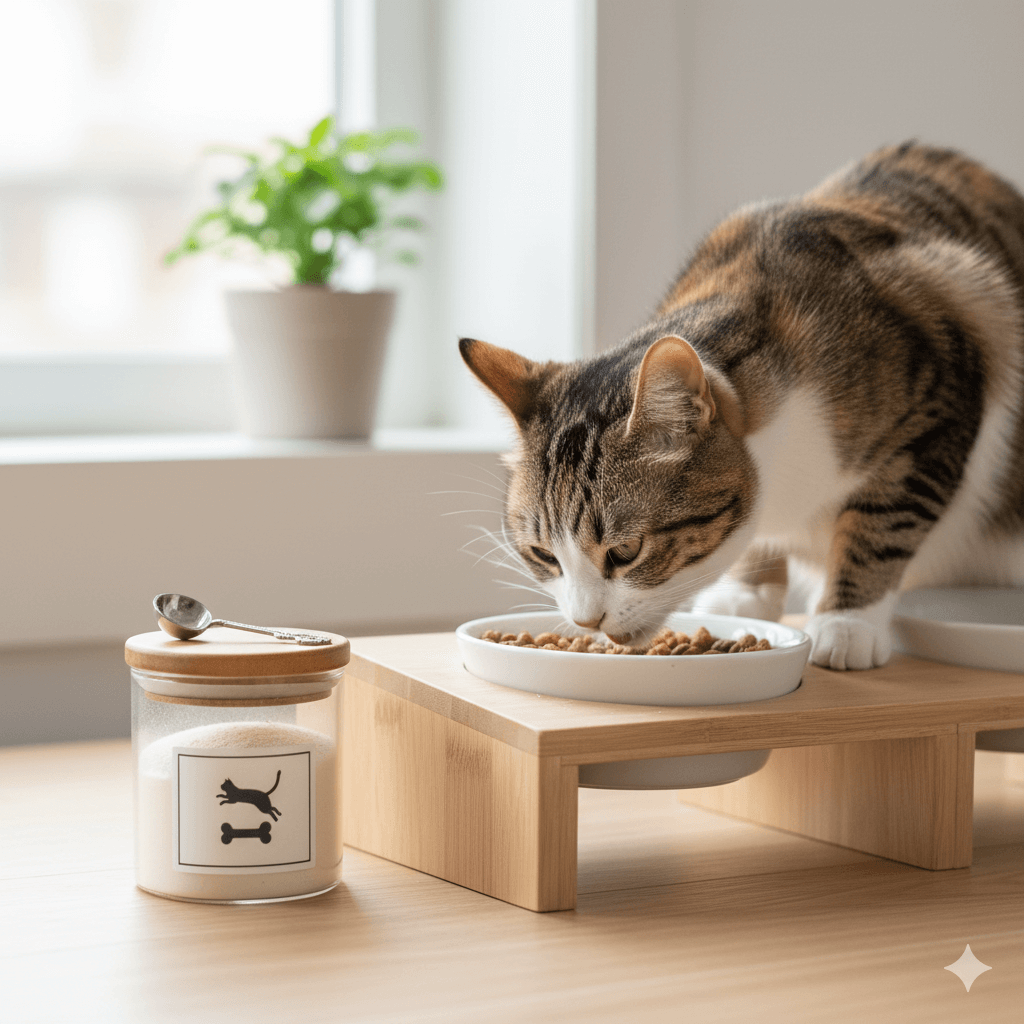Can Dogs Eat Cherries? What Every Pet Owner Should Know
As a dog owner, you’re likely familiar with the constant worry about what your furry friend can and cannot eat. From chocolate to grapes, there’s a long list of foods that are off-limits for our four-legged companions. But what about cherries? These sweet, juicy fruits are a favorite summertime snack for humans, but can dogs eat cherries too?
The answer isn’t as straightforward as you might think. While cherries aren’t entirely toxic, they come with certain risks that every pet parent should be aware of. In this blog post, we’ll explore everything you need to know about feeding cherries to your dog, including potential dangers, safe alternatives, and tips for keeping your pup healthy.
Understanding the Risks: Why Cherries Might Be Harmful
Cherries may seem like a harmless treat, but there are several factors that make them potentially dangerous for dogs. Before you toss a cherry to your pooch, it’s important to understand the risks involved. Below is a breakdown of the key concerns associated with feeding cherries to dogs.
Cyanide Content in Pits :
The pits of cherries contain small amounts of cyanogenic glycosides, which can release cyanide when ingested. While one or two pits are unlikely to cause harm, consuming multiple pits could lead to cyanide poisoning.Choking Hazard :
Cherry pits are small, hard, and slippery, making them a potential choking hazard, especially for smaller dogs or those prone to gulping their food.Gastrointestinal Upset :
The pit, stem, and leaves of cherries can cause digestive issues like vomiting and diarrhea if ingested. Even the fruit itself, when consumed in large quantities, might upset your dog’s stomach.Obstruction Risk :
If swallowed whole, cherry pits can cause intestinal blockages, which may require surgery to remove. This is particularly concerning for smaller breeds.High Sugar Content :
Cherries are naturally high in sugar, which can be problematic for dogs, especially those with diabetes or obesity.
Understanding these risks is crucial for ensuring your dog’s safety. While cherries aren’t outright toxic, the potential dangers make them a less-than-ideal snack for your furry friend.
Safe Alternatives to Cherries for Your Dog
If you’re looking for a safe and healthy treat to share with your dog, there are plenty of alternatives to cherries that are both nutritious and delicious. Here’s a list of dog-friendly fruits and snacks that you can confidently offer your pup.
Blueberries :
These tiny berries are packed with antioxidants and vitamins, making them a perfect low-calorie treat for dogs.Apples (Seedless) :
Apples are a great source of fiber and vitamin C. Just be sure to remove the seeds and core before offering them to your dog.Bananas :
Rich in potassium and vitamins, bananas are a sweet and safe option. However, they should be given in moderation due to their sugar content.Watermelon (Seedless) :
This hydrating fruit is a refreshing treat, especially on hot summer days. Remove the seeds and rind before serving.Carrots :
Crunchy and low in calories, carrots are an excellent choice for dogs. They also help clean teeth and freshen breath.
By opting for these safer alternatives, you can ensure your dog enjoys a tasty snack without any unnecessary risks. Always introduce new foods gradually and monitor your pet for any adverse reactions.
Check this guide 👉 Can My Dog Eat Shrimp? Best 7 Expert Tips!
Check this guide 👉Can Dogs Eat Popcorn? Top 7 Expert Tips!
Check this guide 👉Can Dogs Eat Kiwi? Best 7 Expert Tips!

Risks of Feeding Cherries to Dogs | Safe Fruits for Dogs |
|---|---|
Potential cyanide poisoning from pits | Blueberries |
Choking hazard from small, hard pits | Apples (seedless) |
Gastrointestinal upset from stems/leaves | Bananas |
Risk of intestinal blockages | Watermelon (seedless) |
High sugar content | Carrots |
Signs Your Dog May Have Eaten Something Harmful
If your dog accidentally consumes cherries or any other potentially harmful food, it’s important to recognize the signs of distress early. Here are some symptoms to watch out for that may indicate your dog has ingested something unsafe.
Vomiting or Diarrhea :
These are common signs of gastrointestinal upset and can occur if your dog eats cherry pits, stems, or leaves.Difficulty Breathing :
Labored breathing could indicate cyanide poisoning, especially if your dog has consumed multiple cherry pits.Lethargy or Weakness :
A sudden lack of energy or unusual fatigue may signal that your dog is unwell.Abdominal Pain :
Whining, restlessness, or reluctance to move could indicate an intestinal blockage or other digestive issue.Excessive Drooling :
Increased drooling can be a sign of nausea or discomfort caused by ingesting something toxic.
If you notice any of these symptoms, contact your veterinarian immediately. Early intervention can make all the difference in ensuring your dog’s health and well-being.
Tips for Keeping Your Dog Safe Around Food
Prevention is always better than cure when it comes to your dog’s health. Here are some practical tips to help you keep your furry friend safe around food, including cherries and other risky items.
Supervise Snack Time :
Always monitor your dog when introducing new foods to ensure they don’t overeat or choke.Store Food Out of Reach :
Keep cherries and other human foods in secure containers or cabinets where your dog can’t access them.Educate Family Members :
Make sure everyone in your household knows which foods are safe and unsafe for dogs to prevent accidental feeding.Provide Plenty of Water :
Hydration is key to maintaining your dog’s overall health, especially if they’ve consumed something that might upset their stomach.Consult Your Vet :
When in doubt, ask your veterinarian before offering any new food to your dog. They can provide personalized advice based on your pet’s health needs.
By following these tips, you can create a safer environment for your dog and reduce the risk of accidental ingestion of harmful foods.
Common Misconceptions About Feeding Cherries to Dogs
There are several misconceptions about feeding cherries to dogs that can lead to confusion among pet owners. To clear up the myths, here’s a breakdown of what’s true and what’s not when it comes to cherries and your furry friend.
Myth: All parts of the cherry are safe for dogs :
This is false. While the flesh of the cherry is generally safe, the pits, stems, and leaves contain harmful compounds that can pose risks to your dog.Myth: A few cherries won’t hurt my dog :
While small amounts may not always cause immediate harm, even a couple of cherries with pits can lead to choking or intestinal blockages, especially in smaller breeds.Myth: Cherries are a healthy snack due to their antioxidants :
Although cherries do contain antioxidants, the high sugar content and potential risks outweigh any minor health benefits they might offer.Myth: Dogs can digest cherry pits easily :
Dogs cannot digest cherry pits, and these hard objects can cause serious digestive issues or even require surgical removal if they get stuck.Myth: Frozen cherries are safer than fresh ones :
Freezing cherries doesn’t eliminate the risks associated with their pits or high sugar content. The same precautions apply regardless of how the cherries are prepared.
Understanding these misconceptions can help you make informed decisions about your dog’s diet. Always prioritize safety over convenience when it comes to sharing human foods with your pet.
Benefits of Choosing Dog-Specific Treats Over Human Foods
While it’s tempting to share your snacks with your dog, opting for treats specifically designed for dogs offers numerous advantages. Here’s why dog-specific treats are a better choice than human foods like cherries.
Formulated for Canine Nutrition :
Dog treats are carefully crafted to meet the dietary needs of dogs, providing balanced nutrients without unnecessary additives or sugars.No Risk of Toxic Ingredients :
Unlike human foods, dog treats are free from ingredients like chocolate, grapes, or cherry pits that could harm your pet.Portion Control :
Dog treats come in pre-portioned sizes, making it easier to manage your dog’s calorie intake and avoid overfeeding.Variety of Flavors and Textures :
From crunchy biscuits to soft chews, dog treats cater to different preferences, ensuring your pup enjoys their snack while benefiting from it.Promotes Dental Health :
Many dog treats are designed to clean teeth and reduce plaque buildup, contributing to better oral hygiene for your pet.
By choosing dog-specific treats, you can provide your furry friend with a safe and enjoyable snacking experience. These options eliminate the guesswork and ensure your dog stays healthy and happy.
How to Introduce New Foods Safely to Your Dog
Introducing new foods to your dog’s diet requires careful planning to avoid adverse reactions. Whether you’re considering fruits like blueberries or other human foods, follow these steps to ensure a smooth transition.
Start with Small Portions :
Offer only a tiny amount of the new food at first to monitor how your dog reacts. This helps you identify any allergies or sensitivities early on.Observe for 24 Hours :
After introducing a new food, keep an eye on your dog for signs of digestive upset, such as vomiting, diarrhea, or excessive gas.Avoid Mixing Multiple New Foods :
Stick to one new food at a time to pinpoint the cause of any negative reactions. Mixing too many new items can make it difficult to identify the culprit.Consult Your Veterinarian First :
Your vet can advise whether a specific food is safe for your dog based on their age, breed, and health conditions.Gradually Increase Portion Sizes :
If your dog tolerates the new food well, you can slowly increase the portion size over time, but always in moderation.
By following these guidelines, you can safely introduce new foods to your dog’s diet without compromising their health. Patience and observation are key to ensuring your pet enjoys a varied and nutritious diet.
Frequently Asked Questions About Dogs and Cherries
Are cherries toxic to dogs?
While the flesh of cherries isn’t toxic, the pits, stems, and leaves contain compounds that can be harmful if ingested in large quantities.
What should I do if my dog eats a cherry pit?
Monitor your dog closely for signs of distress. If they show symptoms like vomiting, difficulty breathing, or lethargy, contact your vet immediately.
Can puppies eat cherries?
It’s best to avoid giving cherries to puppies, as their smaller size and developing digestive systems make them more vulnerable to harm.
How many cherries can a dog safely eat?
It’s safest to avoid feeding cherries altogether. If you must, remove the pit, stem, and leaves, and offer only a small amount of the fruit.
Are frozen cherries safe for dogs?
Frozen cherries still pose the same risks as fresh ones, including potential cyanide poisoning from the pits. Always remove the pits before offering.
Final Thoughts: Prioritizing Your Dog’s Health
When it comes to your dog’s diet, it’s always better to err on the side of caution. While cherries may not be the most dangerous food for dogs, the risks associated with their pits, stems, and high sugar content make them a less-than-ideal choice. By opting for safer alternatives like blueberries, apples, or carrots, you can provide your pup with a tasty and nutritious snack without compromising their health. Remember, your dog’s well-being is worth the extra effort. Always prioritize their safety, and consult your veterinarian whenever you’re unsure about introducing new foods. With a little care and attention, you can ensure your furry friend stays happy, healthy, and wagging their tail for years to come.
Understanding Bone Supplement for Cats: Best 7 Expert Tips! – Safe, vet-approved guidance for strong feline bones & balanced nutrition.
Bone Supplement for Dogs: Best 7 Expert Tips! – Expert guide to calcium, collagen & bone health for every life stage.
Understanding Can Cats Get Sunburn: Best 7 Expert Tips! – Protect your feline from UV damage with vet-backed prevention strategies.
How to Train a Seizure Alert Dog: Best 7 Expert Tips! – Learn expert-backed steps to nurture natural instincts into reliable, life-saving seizure alerts.





